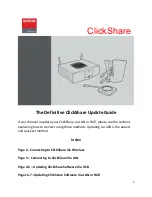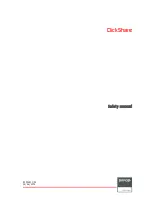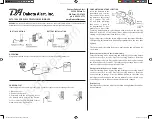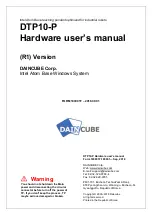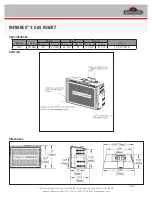
55
Setup Manual
S
E
CT
IO
N 4
La
se
r Pr
o
duc
t
C
las
sific
a
tio
n
s
SECTION 4
Appendix
Laser Product Classifications
EN/JIS
FDA/ANSI
Class
Description
Class 1
Safe inherently by engineering design.
Class 2
Low power in the visible spectrum (wavelength: 400 to 710 nm); eye protection normally
afforded by aversion responses.
Class 3A
Direct intrabeam viewing with optical aids may be hazardous.
Power of less than 5 mW max. for visible spectrum.
Less than five times the output of the Class 1 for wavelengths other than the visible spec-
trum.
Class 3B
Direct intrabeam viewing may be hazardous.
It is not hazardous to view the pulse laser radiation that does not focus due to scattered
reflection and the power that allows safe viewing under certain conditions is less than 0.5
W.
Class 4
High power; diffused reflection may be hazardous and may lead to skin hazards or fire.
Class
FDA definition
ANSI description
Class I/1
Limits applicable to devices that have emis-
sions in the ultraviolet, visible, and infrared
spectra, and limits below which biological
hazards have not been established.
A Class 1 laser is considered to be incapa-
ble of producing damaging radiation levels
during operation and maintenance and is,
therefore, exempt from any control mea-
sures or other forms of surveillance.
Class IIa/2a
Limits applicable to products whose visible
emission does not exceed Class I limits for
emission durations of 1,000 seconds or less
and are not intended for viewing.
Class 2 lasers are divided into two sub-
classes, 2 and 2a. A Class 2 laser emits in
the visible portion of the spectrum (0.4 to 0.7
µm) and eye protection is normally afforded
by the aversion response including the blink
reflex.
Class II/2
Limits applicable to products that have emis-
sions in the visible spectrum (400 to 710
nm) for emission durations in excess of 0.25
second, providing that emissions for other
durations and/or wavelengths do not exceed
the Class I limits. Class II products are con-
sidered hazardous for direct long-term ocu-
lar exposure.
Class IIIa/3a
Limits to products that have emissions in the
visible spectrum and that have beams where
the total collectable radiant power does not
exceed 5 milliwatts.
Class 3 lasers are divided into two sub-
classes, 3a and 3b. A Class 3 laser may be
hazardous under direct and specular reflec-
tion viewing conditions, but the diffuse
reflection is usually not a hazard.
Class IIIb/3b
Limits applicable to devices that emit in the
ultraviolet, visible, and infrared spectra.
Class IIIb products include laser systems
ranging from 5 to 500 milliwatts in the visible
spectrum. Class IIIb emission levels are
ocular hazards for direct exposure through-
out the range of the Class, and skin hazards
at the higher levels of the Class.


























